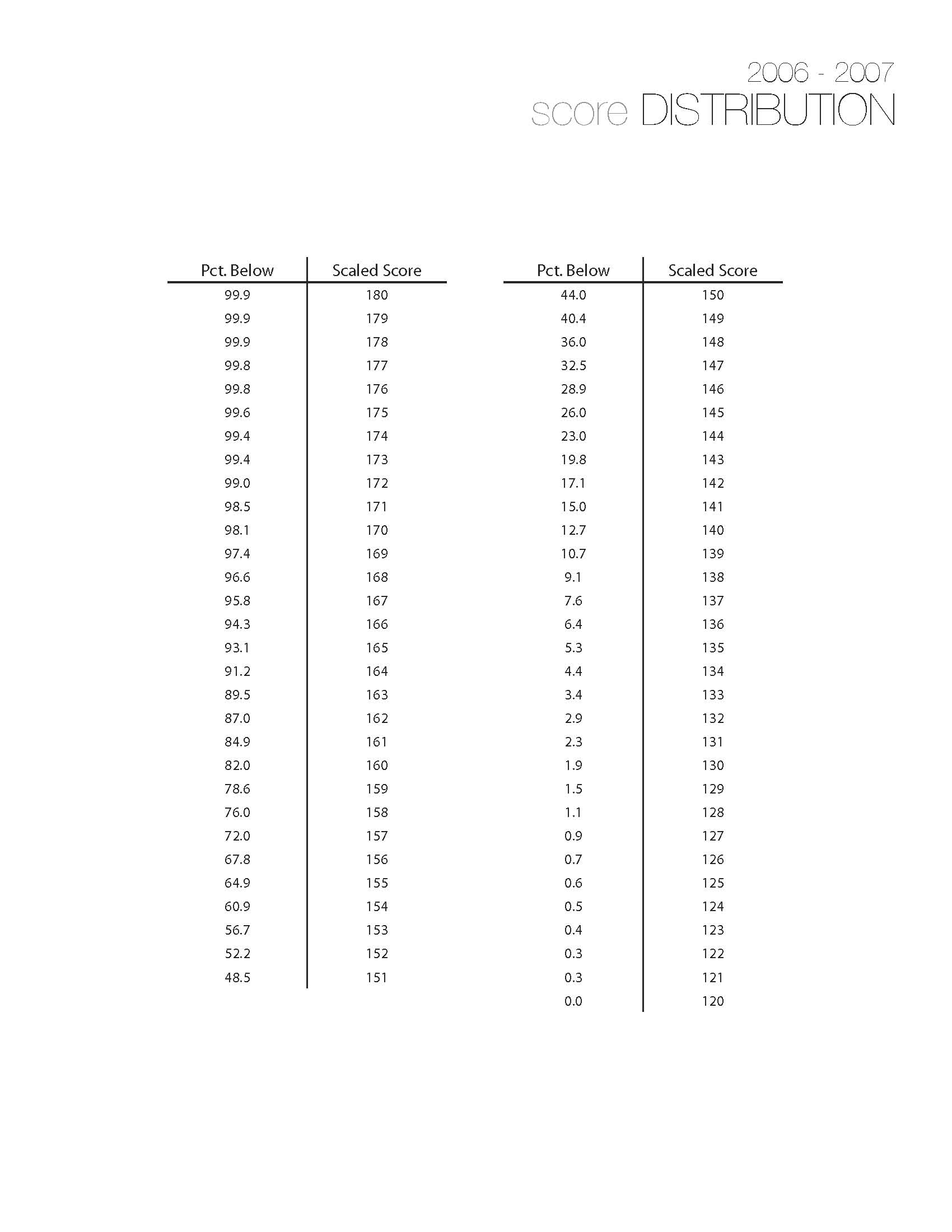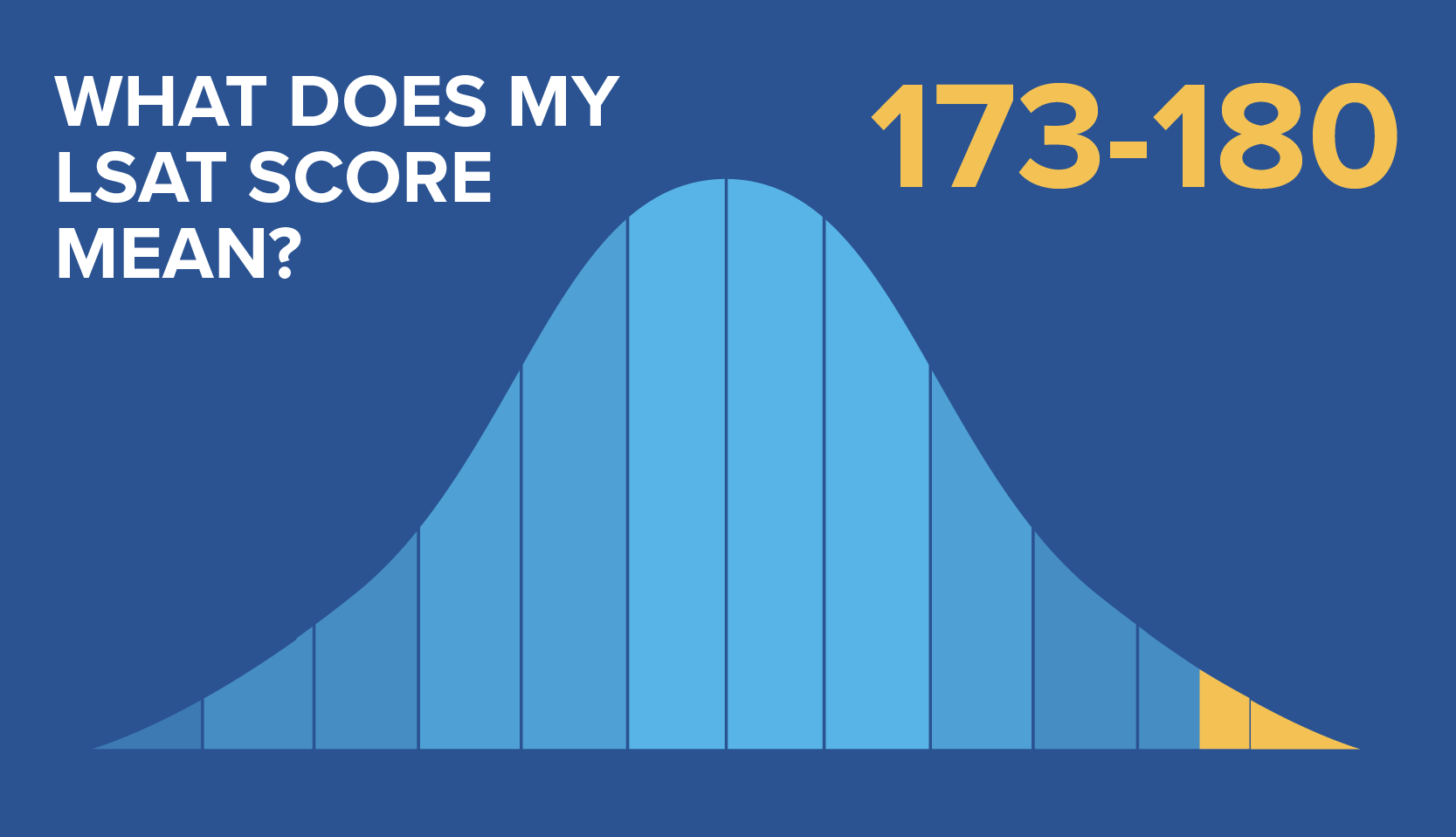
On the LSAT, your score isn’t given simply as a percentage of the number of questions you got right. Instead, the number of questions you get right determines your “scaled score.” This is like converting a number grade into a letter grade, except in the case of the LSAT it’s translating from one number into a more meaningful number.
The number you start with is your raw score: the number of questions you got right. Then the LSAT decides which raw score is going to correspond to which scaled score based on a variety of factors–like the total number of questions on the test and, to some extent, the overall difficulty of the questions.
Below you can see a chart that tells you based on your raw score (number of questions answered correctly) what your scaled score would be ranging from 120 at the low end to 180 and the high end.

You also want to know how good your scaled score is, and for that you want a percentiles chart. The percentile chart will tell you how many people score at or below that score. So for example, if you scored in the 99th percentile (172), that means 99% of other test-takers scored at or below that level. The percentiles chart isn’t just for the single administration that you take, but rather is an average over several years.

So now that we know what the curve is, what do we do about it? Nothing. You just prep for the LSAT and take it. Do your best. Live your best life.
How do I prepare for the LSAT?
We all retain information and learn differently. Some people need more support than others. LSAT prep courses can range from classroom courses to Live Course streaming courses and online lessons or tutoring. If you don’t know where to start to look, Blueprint LSAT’s team of Academic Managers are experienced in identifying a student’s needs and can help determine which LSAT course fits your goals and learning style.
In case you’re wondering, performance on the LSAT does, to a certain extent, correlate with performance in law school. Here’s an article we wrote on that if you’d like to know a bit more about it.
Several key takeaways from this discussion:
- Should you even worry about the curve? No, because you can’t control it unless you sabotage literally everyone else taking the test. However, you can control how you study for the LSAT. Whether you choose an in-person classroom LSAT course, online LSAT course, a hybrid of the two, or tutoring, only you can dictate how you prep for the LSAT; hard work really does pay off. That said, you’re not alone in this. If you need help deciding how you should prep, speak with one of our experienced Acamdeic Managers!
- LSAT tests are scaled, which helps account for difference in difficult between tests; that means you don’t have to worry about getting a “harder” test.
- The LSAT is a difficult test: average is the 50% percentile (half of people do better, half do worse), which is about a 152. Because the raw score for that percentile is 60 and there are a total of 99 questions, the average student misses almost 40 questions on the LSAT, which would earn you a number grade of 60%, normally a failing grade.
- You don’t have to be perfect to knock the LSAT out of the park. Even someone who scores in the 99% percentile (172)–good enough for all the top schools in the country–misses 11 questions: they’d get a B+/A- in class, but on the LSAT that’s a superstar grade. Fortunately, Blueprint students receive an average 11-point score increase from their first practice test!
Now that you understand, you can clarify your study goal and get back to work!




